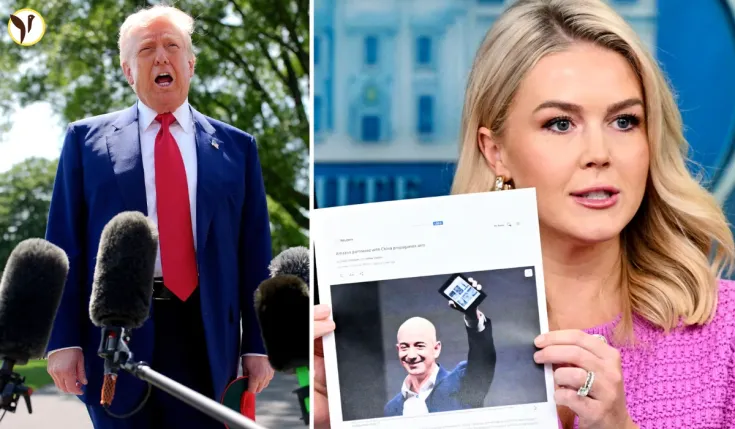Amazon Tariffs: Political Firestorm Over Price Transparency
In a surprising turn of events, Amazon found itself at the center of a political firestorm after reports surfaced that it considered displaying tariff costs on its Amazon Haul platform. This seemingly simple move to enhance price transparency ignited a backlash, highlighting the intertwined nature of business, politics, and public perception in today's climate.
What Happened?
Amazon’s plan was straightforward: add labels to product listings on its budget-friendly Amazon Haul, clearly showing how much of the price was attributed to import tariffs. The goal was to provide customers with greater understanding of the final cost. However, this initiative quickly escalated into a major controversy.
The Political Backlash
The White House viewed Amazon’s proposed move not as a simple transparency measure, but as a deliberate political act. White House Press Secretary Karoline Leavitt described the idea as “hostile and misleading,” arguing that it unfairly shifted blame for price increases onto the government, a particularly sensitive issue during an election year. The timing, just as inflation was a major concern for many Americans, amplified the criticism.
Trump's Intervention
The situation escalated dramatically when former President Donald Trump reportedly called Amazon CEO Jeff Bezos directly. Details of the conversation remain private, but shortly after, Amazon issued a statement unequivocally stating that the plan to show tariff labels was never approved and would not be implemented.
Market Reaction
The initial reports of Amazon's plan caused a temporary dip in Amazon's stock price, falling by 2%. However, once the company clarified its position and the dust settled, the stock recovered. This swift recovery indicates that investors valued the company's quick response and transparent communication regarding the situation.
Why This Matters
This incident underscores the potential for tech companies to unintentionally become embroiled in political controversies. Even internal discussions, when leaked, can significantly damage brand reputation and market confidence. The Amazon tariff labeling debacle showcases how economic issues, such as tariffs and price transparency, can easily become highly charged political matters.
The Broader Context of Tariffs
The controversy also highlights the ongoing debate surrounding tariffs. While tariffs aim to protect domestic industries, they often increase the cost of goods for consumers. The differing perspectives on the impact of tariffs—and who should bear the burden— underscore the complexity of these policy decisions.
Conclusion: The Power of Perception
The Amazon tariff labeling controversy serves as a potent reminder of the power of perception in the modern business environment. Simple actions, or even just internal ideas, can quickly become entangled in complex political narratives. For businesses, clear communication and careful consideration of the potential political implications are crucial. For consumers, greater understanding of tariff structures and their impact on pricing is essential. The story ultimately emphasizes the need for responsible corporate action, particularly amidst highly sensitive economic and political climates.






